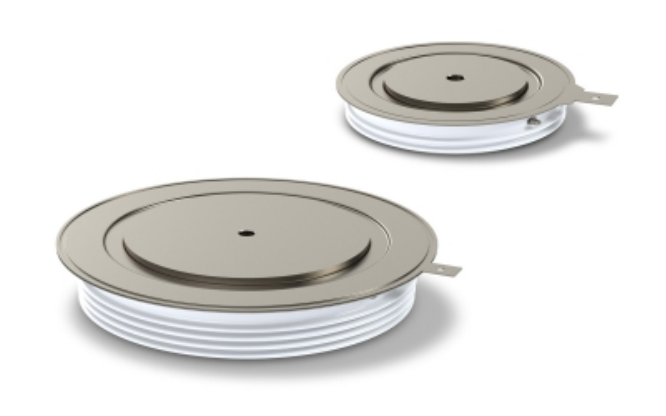Asymmetrical Thyristor: A Rising Star in Electronic Engineering
An Asymmetric Thyristor, also known as an asymmetric Thyristor, is a semiconductor device with a unique structure. It consists of two transistors, one of which is different in size and doping concentration. This asymmetrical design allows the Thyristor to exhibit different resistance values in the on- and off-states, allowing for more efficient current control.
A Thyristor typically consists of two transistors (bipolar transistors) with three terminals: an anode (A), a cathode (K), and a gate (G). When a voltage is added between the cathode and anode, the Thyristor is in the off state, where both transistors are off. If the Thyristor is to be turned on, an appropriate voltage needs to be applied between the gate and the cathode. This voltage will trigger one of the transistors (usually the one with a higher doping concentration) to turn it on. Once this transistor is turned on, it will generate a current that will trigger another transistor to turn on, causing the entire Thyristor to go on. In the ON state, current will flow through the Thyristor from the anode to the cathode. In this case, due to the asymmetrical design, the current will be unevenly distributed between the two transistors so that one of the transistors will carry more current. This asymmetry in the current distribution helps to control the current effectively. To turn off the Thyristor, apply a reverse voltage between the gate and cathode so that one of the transistors is shut off. Once this transistor is shut off, the other transistor will also lose the trigger current, shutting down the entire Thyristor.


Features and benefits of Asymmetric Thyristor
Asymmetric Thyristor is a semiconductor component with unique properties, the key feature of which is the asymmetrical structural design. This design allows the Thyristor to have different resistance values in the on- and off-states, allowing for efficient current control. Compared to conventional semiconductor components, asymmetric Thyristor has higher switching speeds, lower power consumption, and longer service life, making it promising for a wide range of applications in electronic engineering.
Areas of application for asymmetric Thyristor
Asymmetric Thyristor has many applications in power conversion and control, communication and signal processing, and automotive electronics and industrial control. With the continuous development of science and technology, Asymmetric Thyristor will continue to play an essential role in electronic engineering, injecting new vitality into the future development of electronic engineering.
Power Conversion & Control
The high switching speed and low power consumption of the asymmetric Thyristor give it significant advantages in the field of power conversion and control. By using asymmetric Thyristors, engineers can design smaller, more efficient power modules that improve the energy efficiency of their equipment. In addition, asymmetric Thyristor has many applications in motor control, photovoltaic inverters, and more.
Communications & Signal Processing
The asymmetric Thyristor also has essential applications in high-speed signal processing and communications. Due to its excellent switching performance, the asymmetric Thyristor can achieve high-performance digital signal processors (DSPs) and analogue signal processors (ASPs), bringing breakthroughs in communication and signal processing.
Automotive Electronics & Industrial Control
With the continuous development of the automotive and industrial sectors, the requirements for electronic control systems are also increasing. The asymmetric Thyristor has excellent high-temperature resistance and long life, making it ideal for automotive electronics and industrial control. By using asymmetric thyristors, the stability and reliability of power control systems can be significantly enhanced.
Development: Future technology trends
1. Intelligent Control and Optimization: Asymmetrical Thyristor's innovative dynamic contrast adjustment technology will be further developed to achieve more precise current control and efficient energy use through more intelligent control and optimization algorithms.
2. Sustainable development and environmental protection: With the increasing global focus on environmental protection and sustainable development, asymmetric applications are becoming an essential solution.
3. Thyristor will pay more attention to environmental protection and sustainable development. For example, in photovoltaic inverters, wind power generation, and other fields, asymmetric thyristors will be widely used to reduce energy losses and improve energy conversion efficiency.
4. Convergence of 5G and IoT technologies: With the rapid development of 5G and IoT technologies, there will be more application scenarios for asymmetric Thyristors. For example, in IoT devices, asymmetric Thyristor can be used to achieve efficient power management and signal processing to improve device performance and stability.
Asymmetrical thyristor suppliers
Tongrun Photoelectron is a high-tech enterprise specializing in the research and development, production and sales of power semiconductor devices. It has a high-quality R&D team with advanced R&D technology and experience and has several core patents. The company pays attention to technological innovation and product research and development and constantly introduces new power semiconductor devices that meet market demand. At the same time, Tongrun Optoelectronics pays attention to product quality and reliability, and strictly follows the quality management system for production and management to ensure product reliability and high quality. If you are satisfied with this product, please feel free to contact us or click on this product for inquiry: sales@pddn.com
